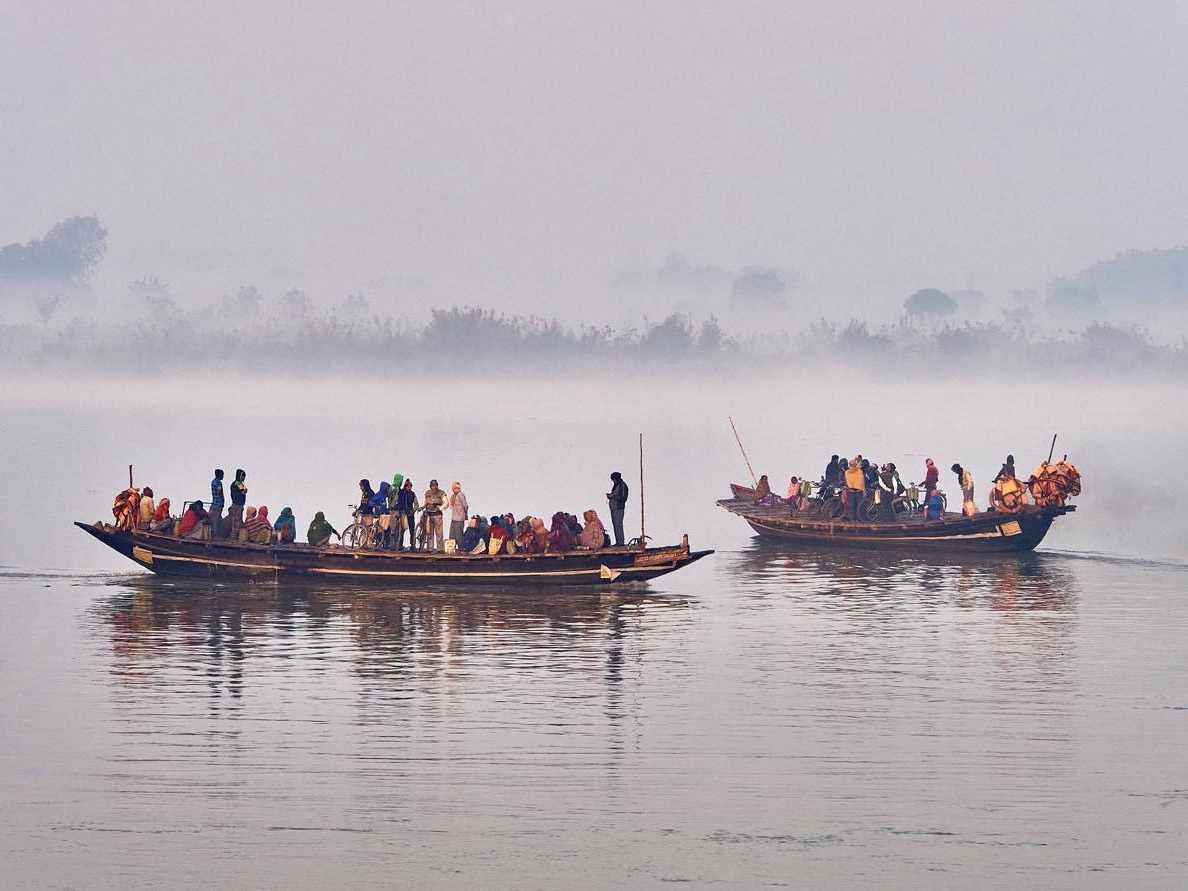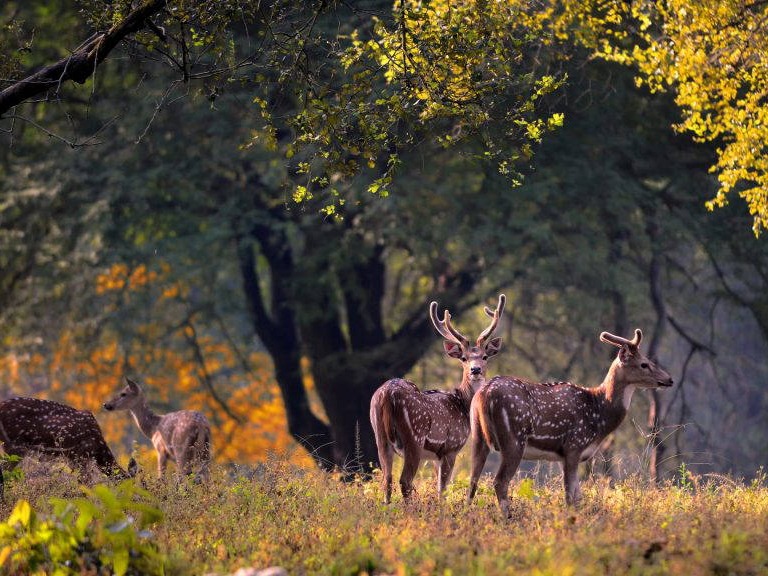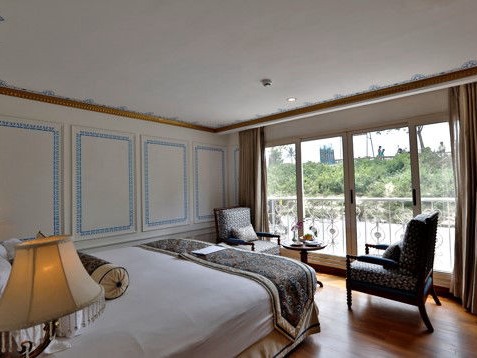Image Courtesy: The Rajbari Bawali
Kolkata, the City of Joy has innumerable experiences and a novel way to immerse in this charmingly chaotic city is the luxury river cruise onboard the Bengal Ganga or the Ganges Voyagers. It is easy to be overwhelmed by the sheer expanse of the experiential spectra available, which is not just a platitude but the absolute reality. Kolkata is a hidden gem, hiding in plain sight, lost in the annals of history and a world whose priorities underwent a paradigm shift. But every once in a while, it is soothing to slow down and experience something unique and timeless to get a fresh perspective. We cannot think of anything more apt than exploring India through a river cruise on the Ganges, India’s lifeline.
To begin your explorations of the first destination downstream, India’s youngest colonial city, one with the accolade of having the densest conglomeration of British architecture in the world, outside of England, in the majestic grounds of Dalhousie Square, Kolkata. But we want to take you along on an exotic journey to the unknown palaces of Zamindars.
The decaying mansions of the babus, who were the rich, British-influenced Indian gentry. They were built in a medley of architectural styles that V.S. Naipaul calls ‘Calcutta Corinthian’ and are unique.
- Dutta, author of ‘Calcutta, a Cultural and Literary History
Kolkata’s past can be segregated into three eras: pre-Imperial, Imperial and post-Independence. Kolkata was been established in 1690 by Job Charnock of the East India Company, setting up a modest factory, which then became a significant trading and military outpost, later transforming into a political centre. Early British factories or forts in India were truly multinational. Trade was the supreme objective and people of different races and religions, including the Bengalis in Kolkata, were encouraged to settle around the British outposts such as Fort William in Kolkata. It was much later that the population became ghettoised.
Most notable were Kolkata’s mercantile and landowning class who enjoyed the patronage of the British from around the 1750’s to 1900, but particularly strongly during the second half of the eighteenth century.
There were many Great Houses of the indigenous merchant class in Kolkata who with growing wealth and political influence erected edifices to mirror it starting with the 1756 Palace of Raja Nabakrishna to 1904 with the Palace of the Burdwan Raj. Such was the legend of these great houses that even minstrels sang about them. The title of Losty’s volume, Calcutta, City of Palaces, 1690 – 1858, (1990), refers to a Kolkata of earlier times which was known as a ‘city of palaces’. Losty’s book includes the following poem written by James Atkinson in 1824, reputably the first time the word ‘palaces’ is used to describe the European buildings of Kolkata;
But we here behold A prodigy of power,
transcending all The conquests, and the
governments, of old, An empire of the Sun, a
gorgeous realm of gold. For us in half a century,
India blooms The garden of Hesperides, and we
Placed in its porch, Calcutta, with its tombs And
dazzling splendours, towering peerlessly, May taste
its sweets, yet bitters too there be Under attractive
seeming. Drink again The frothy draft, and revel
joyously; From the gay round of pleasure, why
refrain! Thou’rt on the brink of pleasure, why
refrain! Thou’rt on the brink of death, luxuriate
on thy bane. I stood a wandering stranger at the
Ghaut, And, gazing round, beheld the pomp of
spires And palaces, to view like a magic brought:
All glittering in the sun-beam
The landowners or Zamindars existed as a class even before the Mughals and Sultanate took Bengal and Islam started penetrating these lands. Although called Zamindars, it was merely titular under the Mughals and later Sultans with actual ownership of the land itself was by the farmers. But this changed under British East India Company. The concept of Zamindar had evoked a new dimension by the ‘Permanent Settlement Act-1793’, which for the first time confirmed the ownership of land by Zamindars in the Colonial Period.
The Zamindars were tax collectors and enforcers and always enjoyed the patronage of the ruling dynasty and hence grew in wealth. The palaces of the Mughal and Sultanate periods, although rare these days and mostly in ruins, clearly depict Islamic influence.
The Battle of Plassey of 1757 brought winds of change and new masters. The Zamindars of Kolkata were quick to adopt and soon became indispensable to the British as tax collectors. With the change of guard, the Zamindars were influenced by the Colonial and European style and the palaces in and around Kolkata reflect these inspirations. Despite the British architectural models available during the colonial period, the Great Houses feature hybrid designs and eclectic architectural forms. The Great Houses embody a particular time and place in the history of Kolkata and are unique and hence are part of Kolkata’s heritage.
The architecture of Zamindar Palaces has always been misunderstood as misrepresented by historians and only recently an attempt to depict the true motive and identity of Zamindari Architecture as a novelty in its own right has been made. Rajbaris are often confused with bonedi bari or zamindar bari. While a rajbari housed the royalty, bonedi baris were homes of the founding families of Bengal. Zamindar baris were the homes of affluent landlords.
As recorded by British historians and artists, they viewed the Zamindar architecture as an unholy syncretism of Colonial, European and Islamic elements, as evidenced by the comment of Thomas Daniells, an artist commissioned to produce paintings and aquatints of Kolkata:
In this view on Chitpore Road...appears the house of a native Bengal merchant; the style of architecture in its ornamental parts is Mahommedan, except in the turret, which is an unsuccessful attempt at the Grecian, as introduced by the Portuguese. These incongruities very frequently occur in modern Indian buildings, whose owners have intercourse with Europeans.
But this understanding was far from the truth. Zamindari architecture can be understood only as a testament to the aspirational mindset while their values were rooted in Hinduism and its traditions. Despite being influenced by Colonial experiences, traditional Hindu ways of life continued unabated in the private domains of the Great Houses.
Whether or not history paid its due to these magnificent creations, they left an indelible mark on the English language itself. The word ‘bungalow’ comes from the Hindi word Bangla meaning ‘of Bengal’, ‘in the Bengal style’, or belonging to a Bengali. Need we say more?

Seeking inclusive growth, wellbeing and self-actualization are the cruces of all endeavour at Exotic Heritage Group. We have stayed on this path for more than fifteen years and evolved as we go along, learning and discovering more about the interconnectedness of things...

India, with an aim of preserving its fauna and flora, has built several national parks and animal reserves across its latitudes and longitudes. Out of them, Kanha National Reserve, in Madhya Pradesh, is one of the largest. Spread over an area of 940 sq km...

As I was sitting on the top deck, the cool wind gently brushed against my face, reminding me what a great decision I had made by booking a cruise trip with RV Bengal Ganga. I am a frequent traveler and was looking forward to a cruise trip but honestly, this particular cruise...